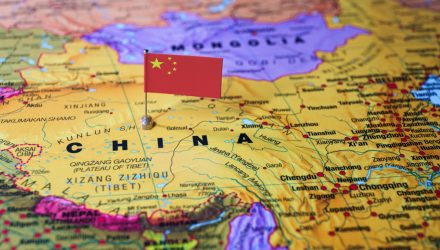Following three consecutive annual losses, the MSCI China Index isn’t doing much to foster confidence among investors in the early innings of 2024. About a month and a half into the year and the widely followed gauge of Chinese equities is lower by 6.11%.
That’s far worse than the year-to-date loss posted by the MSCI Emerging Markets Index, but some market observers believe things aren’t as bad as they appear for Chinese stocks. Assuming that the prognosis is accurate, exchange traded funds such as the Invesco Golden Dragon China ETF (PGJ) could benefit.
PGJ, which follows the NASDAQ Golden Dragon China Index, is home to 70 stocks, the bulk of which trade on U.S. exchanges. Fortunately, the ETF allocates just 3.72% of its weight to real estate equities – a plus at a time when many global investors remain apprehensive about the state of China’s property market.
Other PGJ Perks
In what could prove to be another point in favor of PGJ as 2024 unfolds, Beijing isn’t sitting idly by while its economy and financial markets dither. While Chinese policymakers and the central bank haven’t unveiled massive stimulus plans, they are taking steps to restore confidence in the world’s second-largest economy and those efforts could pay dividends for assets such as PGJ.
“For example, we recently saw another 15 points off banks’ reserve requirement ratio (RRR), releasing more capital into the market. We have also seen the setting-up of national funding totaling more than USD 215 billion. So, more frequent actions, but it needs to be more consistent. Beijing needs to have clearer, more stable policy actions,” noted BNP Paribas.
Additionally, Beijing remains committed to its efforts to drive more internal consumption – plans that are highly relevant to investors mulling PGJ.
“We believe consumption will remain a key area,” added BNP Paribas. “So, we short retail and [we are] long innovation, the practical trends – internet, artificial intelligence (AI), digitalisation – will still work even in this challenging macroeconomic environment. With the angle of improving free cash flow and dividend, there could be anticyclical ideas. And lastly, turnaround names which are also more immune to the current environment.”
Looking at AI and discretionary spending as two separate issues, PGJ is up to both tasks because the Invesco ETF allocates about 85% of its weight to the consumer discretionary, communication services, and technology sectors, indicating that’s well-positioned to rally if growth stocks lead a China rebound.
For more news, information, and analysis, visit the Innovative ETFs Channel.








